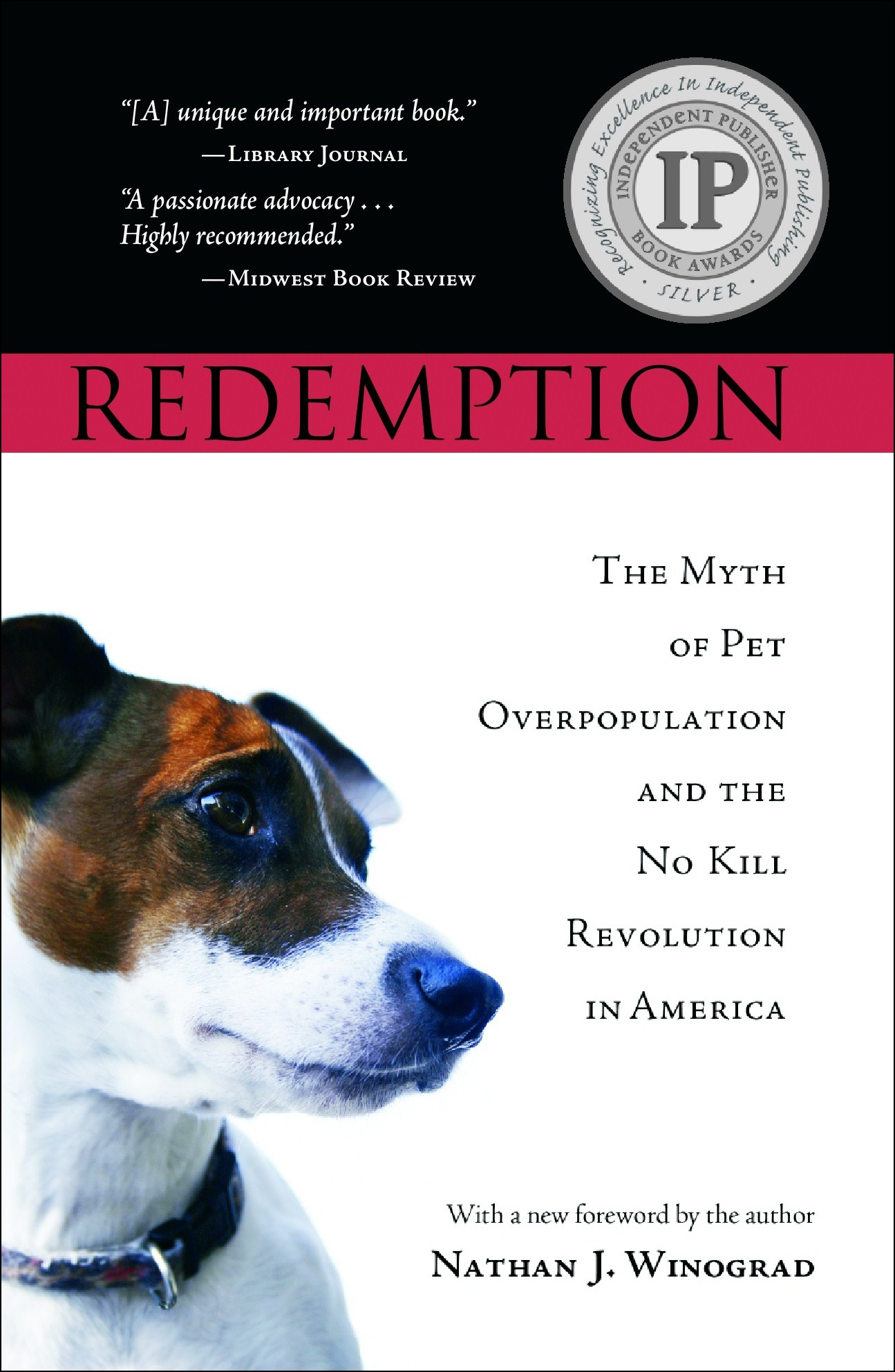Reno plays big role in expanded edition of book ‘Redemption: The Myth of Pet Overpopulation and the No Kill Revolution in America’
By Mark Robison, Reno News Gazette

Nathan J. Winograd was brought in as a consultant to help Nevada Humane Society and Washoe County save more pets. His plans have been in effect for about two years now, and thousands more pets’ lives have been saved in Washoe County than would’ve been under the previous shelter system, based on county and NHS statistics. Winograd published a book in 2007 about his theories of sheltering called “Redemption: The Myth of Pet Overpopulation & the No Kill Revolution.” It’s now out in an expanded version for 2009.
The second edition discusses the partnership between Washoe County Regional Animal Services and Nevada Humane Society. It cites Reno’s success as a positive case study. As Winograd emailed me, “It is very much Reno-centric and hopefully will be a source of local pride. As I said, the eyes of an animal loving nation are on Reno.”
It also includes a new foreword, an expanded discussion of the No Kill Equation, and a new section on the need to regulate shelters:
- HSUS has been forced to modify its language and admit that pet overpopulation is a myth. But is it changing in deed as well as word?
- What if pet overpopulation is real? Does that change the calculus of killing?
- Do shelter animals have a right to live?
- How can we dismantle the killing paradigm?
- Should we regulate shelters the way we regulate other institutions that have the power of life and death? And how?
Here’s an excerpt from the book:
Unfortunately, many shelter directors remain steadfast in their refusal to embrace the No Kill paradigm. To them, the culprit for the killing remains “pet overpopulation,” a dogma they cling to with the fervor of religious faith and which they deem to be simply beyond question—outside the realm of factual confirmation, data, and analysis.
When I argue in this book that pet overpopulation is a myth, I am not saying that people aren’t irresponsible with animals. It doesn’t mean there aren’t a lot of animals entering shelters. It doesn’t mean it wouldn’t be better if there were fewer of them being impounded. Nor am I saying shelters don’t have institutional obstacles to success. But it does mean that these problems are not insurmountable. And it does mean we can do something other than killing for all savable animals right now, today: if all shelter directors cultivate the desire and will to do so, and then earnestly follow through. That is good news. It is news we should celebrate. And it should be the focal point with which we target our advocacy efforts to achieve the greatest declines in killing possible in the shortest amount of time.
It is not pet overpopulation if kittens are being killed in shelters because the shelter refuses to put in place a foster care program which would eliminate the “need” to kill kittens, as too many shelters in this country do. It is the shelter’s decision to kill kittens instead of implementing a foster care program that is killing kittens. It is not pet overpopulation if Pit Bull-type dogs are being killed because the shelter kills dogs based on arbitrary criteria and unfair stereotypes, even if the individual dogs are healthy and friendly. It is the shelter’s decision to adhere to an arbitrary policy that dictates that Pit Bull-type dogs should be killed that is killing those dogs. The same is true of sick dogs, shy cats or any of the other categories of shelter animals who could be saved with a targeted program that shelter directors simply refuse to implement.
The reality, for example, is that short of leaving them alone or outlawing their trapping, a shelter cannot save feral cats in its facility without a Trap-Neuter-Release (TNR) program, just as it cannot save kittens or puppies without a program such as foster care. Any shelter director who says they oppose No Kill is making the thoroughly unethical argument that they want to continue killing. How do you save animals without embracing alternatives to killing? You cannot. But while any level of lifesaving is not possible without these programs, No Kill is precluded unless they are comprehensively implemented to the point that they replace killing entirely.